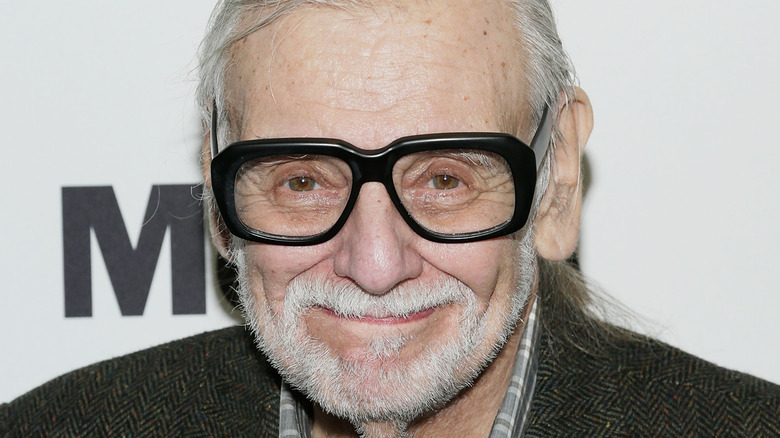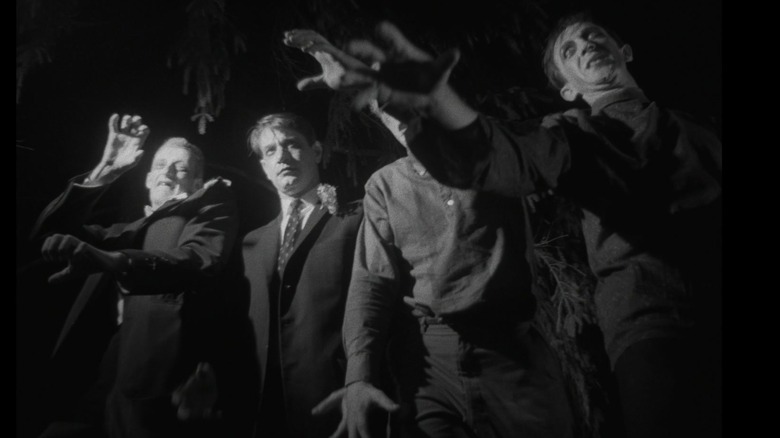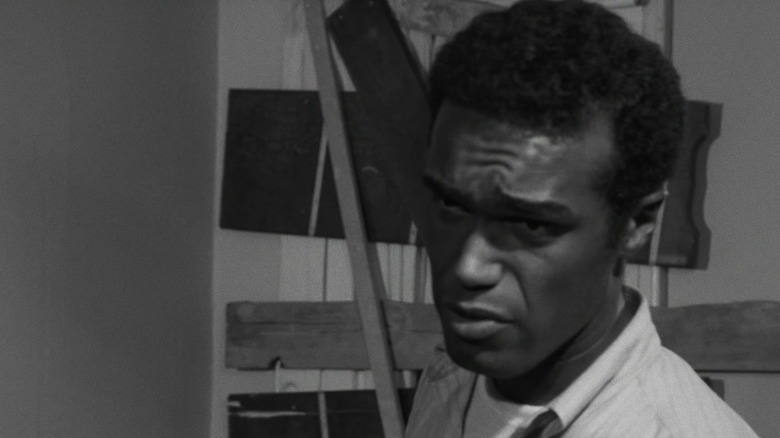How Night Of The Living Dead Reshaped These Horror Tropes
When George Romero's "Night of the Living Dead" hit theaters in 1968, the horror genre was in a state of upheaval. Throughout the 1960s, horror films were primarily low-budget slashers, produced with an emphasis on quantity over quality (via New York Film Academy). These were the kind of harmless movies one might go out to see on a date, and Romero's film was one of the first to push the genre in a new direction.
Per NPR, 1968 saw a new kind of horror, one that allowed directors to explore more serious topics and themes ("Rosemary's Baby" was released the same year), and that newfound freedom to explore is fully evident in Romero's horror classic. The film took a genre oversaturated with gory slashers and molded it into something much more profound, setting the foundation for just how flexible and unique horror films could become. Romero's clever twists to a few classic horror tropes proved the genre as a whole could rise up to become something better, and ask deeper questions of its audience.
Romero's new kind of horror
The most influential trope the film reworked was the reinvention of the "monster" in horror cinema, which led to the creation of the modern zombie. While horror films of the past often only focused on one or two monsters like Frankenstein or the Wolf Man, Romero's zombies were a gigantic, unstoppable horde. A collective of slow, shambling dead things, their terror came from how easily they could overwhelm a city, and by extension the whole world. Instead of fearing for our protagonists, audiences now feared for the entire human race — Romero reshaped the stakes of the horror genre into a new, existential kind of dread, as pointed out by Pop Matters.
The film's heightened focus on humanity's downfall allows it to work as a nihilistic critique of society; something best exemplified in its bone-chilling ending (via The Hollywood Reporter). After surviving a night of terror amongst the undead, protagonist Ben (Duane Jones) exits his safe haven only to be gunned down in broad daylight, mistaken for a zombie. Romero presents a bleak view of the zombie apocalypse that would inspire shows like "The Walking Dead," where the real horror is not about the zombie threat itself, but what the apocalypse does to the living.
A lasting social impact
Speaking of Ben and the tragic end to his story, another aspect of the film that makes it so noteworthy is Romero's casting of a Black actor as the lead survivor. At a time when most movies with an African American lead almost always had racial themes in the story (via The Hollywood Reporter), Romero made a conscious choice to shoot the film as written, making Ben the hero despite his race, and not because of it, as noted by The Wrap.
The horror trope of the zombie before "Night of The Living Dead" was actually steeped in Black culture, taking inspiration from stories of undead slaves in Haitian folklore, and often featuring some sort of voodoo magic as the cause of the undead curse. Not only did Romero break new ground in the progressive casting of his lead actor, but in doing so, he reclaimed an aspect of the zombie myth and twisted it so that the African American character in his story was not aligned with the zombies, but one who was actively fighting them.
Whether intentional or not, the social commentary that Duane Jones' casting lends itself to is still relevant today, and the tragic ending where he is gunned down by the town sheriffs is a ringing critique of American society, even in modern times. Romero's masterpiece still influences film and TV to this day, especially in his portrayal of the zombies, and it's fair to say the film marks a notable shift in the horror genre as a whole.


